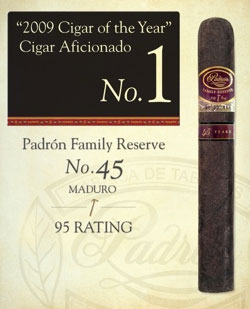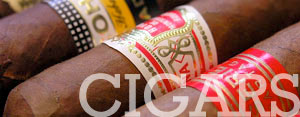Cigar smoking is a culture in itself and to enjoy the most from your cigar, you must know how to cut, light and finally, smoke a cigar.
Choosing a Cigar
 When purchasing a cigar, either from a tobacco shop or an online store, there are certain things you should keep in mind:
When purchasing a cigar, either from a tobacco shop or an online store, there are certain things you should keep in mind:
The length and diameter of the cigar is related to the intensity of the cigar. So if you’re a novice cigar smoker, then you may want a longer, thinner cigar (with cooler smoke) rather than a small stubby one, which may make you cough some.
Verify the quality of the cigar by squeezing it slightly to make sure there are no lumps in the it, and check to ensure that the tobacco at the end of it is not discolored. Also, avoid purchasing cigars with discolored wrappers.
Remember that if you’re purchasing cigars in the United States, you’d be hard-pressed to find Cuban cigars, which is too bad, as these are top quality stogies.
But lucky for you, we teamed up with several online retailers that can sell you even those hard to get cigars. You can find a list of those retailers in our cigar resources section.
Cigar types
Although cigars are broken down into groups, depending on where they’re made and the tobacco leaves used, here are several categories of cigars classified by their shape and size.
Churchill
Measures 7 inches by 47-ring gauge (refers to the measurement for the diameter of a cigar). Named after Winston Churchill himself, who made the cigar one of his trademarks.
Corona
Measures 6 inches by 42-ring gauge. The standard by which other cigars are manufactured, the corona has an open foot (the end you light) and a closed head (the end you smoke), which is usually rounded.
 Pyramid
Pyramid
Has a pointed, closed head.
Robusto
5 inches by 50-ring gauge.
Torpedo
Has a pointed head, closed foot and a bulge in the middle.
Panatelas
At 7 inches by 38-ring gauge, these are usually longer and thinner than coronas.
Culebras
Three Panatelas braided together to form one cigar.
Diademas
8 inches or longer, this large cigar usually has an open foot.
Perfecto
Similar to the torpedo, except that it has two closed ends with a bulge in the middle. A rounder cigar.
Cutting your cigar
 The aim of cutting the cap on the head of the cigar: To create enough of an opening to smoke the cigar comfortably, while maintaining the original shape of the cigar. So how is this done? No, biting the cigar is not a cutting method. Not only is this ineffective since your teeth are not real cutting tools, but you will look nothing like an aficionado while you’re spitting out the leftover tobacco in your mouth.
The aim of cutting the cap on the head of the cigar: To create enough of an opening to smoke the cigar comfortably, while maintaining the original shape of the cigar. So how is this done? No, biting the cigar is not a cutting method. Not only is this ineffective since your teeth are not real cutting tools, but you will look nothing like an aficionado while you’re spitting out the leftover tobacco in your mouth.
Straight cut (most recommended): Use a cigar accessory like a single-bladed cigar cutter to horizontally slice off the head in one quick “chop” (a la guillotine). With this single, swift motion, you lessen the probability of tearing the cigar’s wrapper.
Before cutting, bring the blade down towards the cigar — just enough to tap the cigar — to ensure that your blade is positioned properly and aiming at the right spot on the cigar. The bull’s eye is right where the cap of the cigar meets the wrapper, leaving sufficient space to ensure that enough of the cap is left surrounding the wrapper, preventing it from falling off.
With a double-bladed cutter, chances of making a clean cut are increased and you’re less likely to tear the wrapper with the blade, since the cigar is being cut from both sides simultaneously.
Another suggested method of cutting the cigar is laying the cutter flat on the table, and then placing the cigar flush against the table, through the cutter.
Lighting your cigar
 Now that your cigar is cut, all that’s left is to light it. Great, blaze that bad boy up… Wait, as with everything in cigars it’s not that easy. I know, I know, it’s worth it though. So the general consensus is: When lighting a cigar, if an actual flame touches the cigar it will become to hot, and could spoil the cigar.
Now that your cigar is cut, all that’s left is to light it. Great, blaze that bad boy up… Wait, as with everything in cigars it’s not that easy. I know, I know, it’s worth it though. So the general consensus is: When lighting a cigar, if an actual flame touches the cigar it will become to hot, and could spoil the cigar.
You want to remember to light the entire end of the cigar evenly. The easiest way to do this is to light it while looking at it. Take it from your mouth and light it out in front of you, where you can see it. Once it looks like it’s lit evenly, take a couple puffs on it. Then check your light job again. If it is still uneven, the best way to even out the burn is to rotate the cigar while lighting it. Once you have a even burn on your cigar it is time to sit back, open a tasty beverage and enjoy your smoke, because let’s be honest, it’s been kind of a pain in the ass to get here.
If you must use matches, use longer ones. Short matches make it hard to light a cigar, especially on the first couple of attempts. Try to find matches without sulfur or wait at least until the sulfur burns away.
Smoking your cigar
 Proper etiquette calls for removing the band at some point whilst smoking the cigar. The reason you need to keep it there before smoking it is to prevent the tobacco from tearing, but once the cigar’s lit, you don’t need the band anymore. Enjoy and savor the stogie, but do not inhale! After 12 puffs or so, remove the band, which will probably be falling off on its own thanks to the heat.
Proper etiquette calls for removing the band at some point whilst smoking the cigar. The reason you need to keep it there before smoking it is to prevent the tobacco from tearing, but once the cigar’s lit, you don’t need the band anymore. Enjoy and savor the stogie, but do not inhale! After 12 puffs or so, remove the band, which will probably be falling off on its own thanks to the heat.
So sit back with your cigar in one hand and a glass of port, cognac, bourbon/scotch, or wine (preferably Cabarnet Sauvignon or Mourvedre) in the other. Before you know it, you’ll be discussing humidors and habanos all night long. There is never any need to stub out a cigar, which most simply don’t know or forget. Just lay it to rest when it has served its purpose. It will go out quickly all by itself. Let it die with dignity.




